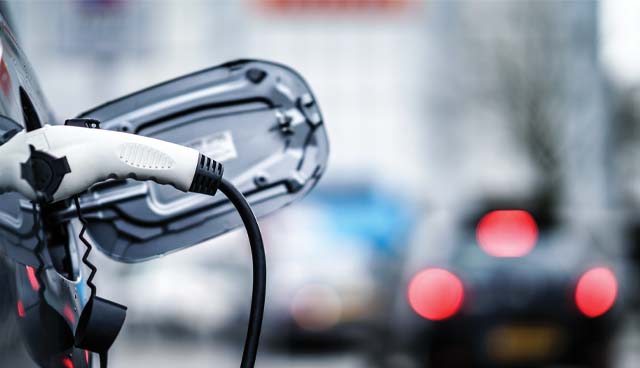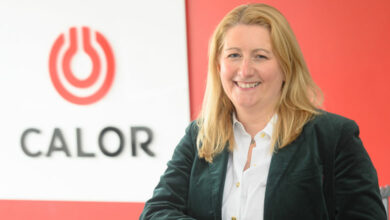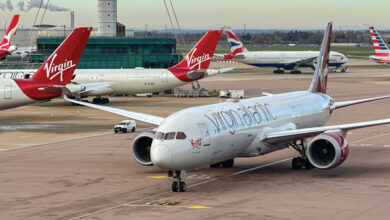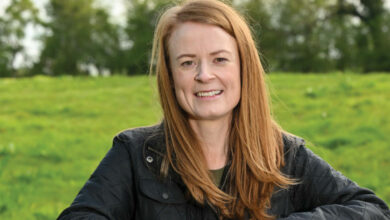Northern Ireland’s electric future

Electric cars are vital to Northern Ireland’s plans to cut carbon emissions, but the country’s once-pioneering charging network has fallen behind the rest of the UK. TLT LLP Partner, Andrew Ryan, looks at how we can move ahead.
Northern Ireland faces a unique challenge if it is to meet the government’s ambitious climate targets. Huge improvements in renewable electricity generation have been made in the last 15 years but still much of the country relies on an outdated power grid, solid fuel or gas for cooking and heating, and diesel or petrol for transport.
Where we are now
Almost all of the public charge points in Northern Ireland are run by ESB and are part of a network established eight years ago in a forward-thinking piece of planning and investment. The network is free to use, which has been a great advantage to electric vehicle (EV) drivers but a disincentive to expansion. While the rest of the UK has enjoyed increasing access to rapid chargers on long journeys and convenient charging closer to home, the same does not apply in Northern Ireland.
For those living in Northern Ireland, there are the fewest rapid chargers per person in the UK, just 1.1 per 100,000 compared to Wales’s 3.2, England’s 5.7 and Scotland’s 10, making long journeys difficult without interruption.
Delivering power to drivers
Like the rest of the UK, the wiring between the National Grid and the end user’s front gate is run by a Distribution Network Operator (DNO), licensed by area. Northern Ireland’s DNO is NIE. In its April 2021 policy statement, Networks for Net Zero, NIE committed to providing funding for the best solution for an EV charging network in Northern Ireland.
Much of the Northern Ireland grid is outdated and requires upgrades to be able to deliver even domestic 7kW chargers to rural areas, work that NIE has said it will undertake in the future, subject to approval.
Currently, just 4,000 of Northern Ireland’s over one million cars are EVs. However, sales of plug-in hybrids and battery EVs rose by 290 per cent from 2019 to 2020. Even with the unreliable charging network, sales are accelerating.
The grid must work to catch up or risk loss of service. In the absence of wiring that can cope with widespread home charging, a reliable and convenient public network is the only possible answer. Big charging companies are reluctant to risk large investments when there are few EVs on the road, and the public are reluctant to pay extra for an electric car when they are difficult to charge. How, then, can the deadlock be broken in time?
The road to 2030
Government and business leaders agree that climate change is an existential threat to our current way of life and must be met with the utmost urgency.
The UK Government has committed to reducing the amount of carbon dioxide emitted by homes, businesses and transport by 78 per cent, compared to 1992 levels, by 2035. To help achieve this, the sale of petrol and diesel cars and vans will be disallowed after 2030, and hybrids after 2035.
In Northern Ireland, the UK’s Committee for Climate Change (CCC) recommends reducing emissions by 82 per cent by 2050. The Northern Ireland government hopes to decarbonise energy entirely by that year. Fifty per cent of Northern Ireland’s electricity consumption is fulfilled by renewables, but the country has a high proportion of heat coming from solid fuel, which cannot be decarbonised. Demand for electricity will rise sharply when heat and transport can no longer be powered by coal, oil, wood, diesel or petrol.
Domestic connection upgrades from the DNO currently take up to a year and nine months. Experts maintain that a 7kW supply is within the capability of many urban domestic supplies (the cable is the same as that required for an electric oven) and that smart metering would give NIE the data required for wholesale improvements to the grid, but those meters are rare.
Northern Ireland-specific problems
Despite NIE’s commitment to upgrading the grid, it retains an unusual pricing system that discourages innovation and new connections. In many countries, the connecting party pays only for the connection itself and the DNO will undertake the upgrades required to ensure a robust supply, spreading the cost over all customers. In Northern Ireland the connecting party is expected to cover at least some of the cost of those upgrades.
The Department for the Economy is to publish an energy strategy document by the end of 2021. Policy and law can be expected to come into force in 2023. Considering the long lead times for car replacements and electricity grid work, this timetable is insufficient to meet the 2030 targets.
Proposed solutions
Under the UK Government’s Road to Zero strategy, it will soon be law that, where possible, new houses in developments in England and Wales must have EV charging points. This shows the way forward, but Northern Ireland’s grid would not support such a change without comprehensive, expensive and time-consuming upgrades.
At the current low level of take up, it is more important to demonstrate to wavering consumers that their charging needs can be amply taken care of with highly visible, available plugs. Charging hubs can make use of on-site battery storage to ease the load on the grid at peak times.
The country risks being caught in a destructive loop where the big charging companies make their plans in Great Britain because of the greater concentration of EVs, and the Northern Irish motorist sticks with diesel because of the lack of charging stations until regulation and funding encourages innovation, high-profile charging schemes and new connections.
Conclusion
From a strong start, Northern Ireland’s EV charging infrastructure has lost its early advantage in the UK, and adoption rates are suffering as a result.
NIE has been supportive of electrifying transport although circumstances in Northern Ireland are difficult and complicated by regulations and pricing structures. Evidence given in Stormont has been well received and industry welcomes alignment on energy policy such as the Northern Ireland Green Growth strategy. Now is the time to influence ideas to achieve the goal of net zero.
Climate action is welcomed by both the population and industry, and there is goodwill available to forge partnerships between the public and private sector. It is widely accepted that business alone cannot bear the cost of the necessary grid upgrades but well-regulated co-operation between government, the DNO, property developers, charge point companies and vehicle manufacturers is both possible and essential if Northern Ireland is to meet its Road to Zero commitments.
T: +44 (0)333 006 0967
E: andrew.ryan@TLTsolicitors.com
W: www.tltsolicitors.com







